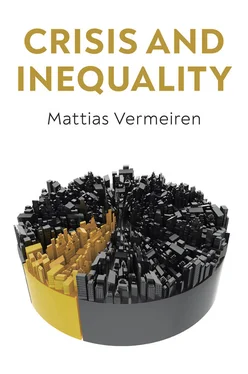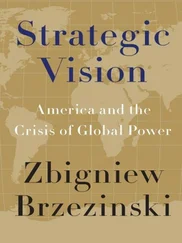Conflict between employers and labour unions during the 1970s resulted in a crisis of the wage-led growth model that had been central to the Keynesian Golden Age of capitalism. From a neoliberal perspective, the crisis of wage-led growth and the ensuing rise in long-term unemployment rates were caused by structural rigidities in labour markets – for example, the excessive influence of labour unions in the wage-setting process – and overly generous welfare states. While there continue to be persistent institutional differences between the Anglo-Saxon LMEs and the European CMEs in terms of social policy, the crisis of the wage-led growth model put pressure on all the advanced capitalist countries to liberalize their labour markets and dismantle their social security systems. In chapter 4 we will review different theoretical perspectives on these liberalization pressures. Class-based power resource approaches maintain that globalization and regional integration have forced the CMEs to liberalize their social model by strengthening the exit power of capital and weakening the power of labour and left-wing political parties. Employer-centred varieties of capitalism (VoC) approaches contend that pressures for liberalization predominantly arose in the domestically oriented service sectors, since employers in the internationally exposed industrial sectors of the CMEs continue to benefit from centralized labour markets and relatively generous social security systems. The chapter subsequently traces different pathways to liberalization in the Scandinavian social-democratic CMEs, the conservative-corporatist CMEs and Anglo-Saxon LMEs. By surveying these diverse trajectories of neoliberalization, it will become clear that all varieties of capitalism – even the more social and redistributive CMEs – have evolved into less egalitarian forms.
Neoliberal globalization also fostered a shareholder model of corporate governance, according to which the maximization of shareholder value and returns should be the principal objective of firms’ business strategy. The shareholder model of corporate governance was more eagerly adopted by firms in the Anglo-Saxon LMEs than in other countries, which explains why the national income share of the top 1 per cent rose much faster in the former than in the latter economies. In chapter 5 we will trace these divergent patterns by looking at institutional differences in corporate governance and associated executive compensation practices. First of all, we will attribute the neoliberal shift towards shareholder value maximization in the US economy to growing international economic pressures faced by large US vertically integrated corporations, financial ideas (the growing popularity of the neoliberal agency theory of corporate governance) and interest group politics (weakening of labour unions and rent-seeking by managers). Subsequently, we will link divergences in corporate governance and executive compensation practices in the CMEs and LMEs to the distinctive institutional complementarities between their financial systems (bank-dominated versus capital market-dominated), labour markets (centralized versus decentralized), educational systems (promoting industry-specific versus general skills) and firm innovation strategies (incremental versus radical innovation). By linking the shareholder model of corporate governance to the increasing financialization of non-financial firms, we go beyond overly functionalist and static VoC approaches of corporate governance and discuss regulatory changes – for example, the European Union’s promotion of the shareholder model as part and parcel of its efforts to integrate European financial markets – that portend an at least partial erosion of the institutional complementarities of CMEs.
Financial globalization promoted a shift towards market-based banking in ways that increasingly blurred the boundaries between national financial systems dominated by capital market financing and those predominantly reliant upon banking credit. Whereas, in the traditional model of financial intermediation, banking credit is funded by retail deposits, market-based banks increasingly rely on the market to enable their lending (e.g. by financing themselves in wholesale funding markets and/or by developing ‘originate-to-distribute’ techniques like securitization). In chapter 6 we will discuss the emergence of market-based banking since the 1980s and its distinctive manifestation in the Anglo-Saxon LMEs and European CMEs, linking diverging dynamics in household debt and housing markets to diverging patterns of income inequality and growth models. In the United States and the United Kingdom these dynamics have been linked to the formation of asset-based welfare regimes that allowed poor and middle-class households to extract easy credit from the rising market value of their homes. In this chapter we will also explain how large banks from the European CMEs were deeply implicated in these dynamics, as they massively invested in these complex securitized assets and funded these investments by borrowing from other banks in short-term US money and eurodollar markets. By offering an overview of these developments in the European financial system, we will challenge the core assumptions on which the bank-based/capital market-based dichotomous framing in the comparative political economy (CPE) literature – especially in the VoC tradition – rests. Moreover, we will highlight strong growth in household debt in several CMEs (especially the Netherlands and Denmark) and clarify why the accumulation of household debt in these countries did not culminate in a fully fledged housing crisis like those in the United States and the United Kingdom.
Two distinctive growth models ensued from these changes in macroeconomic policy, industrial relations, corporate governance and financial policy: debt-led growth models in the LMEs and Mediterranean MMEs and export-led growth models in the CMEs, all of which have been shaped by distinctive patterns of income inequality. Chapter 7 reviews recent analytical approaches to CPE that focus on the relative importance of different components of aggregate demand and dynamic relations among these demand drivers of growth, thereby paying due attention to the instability of these growth models and their diversity within distinct groups of varieties of capitalism. We will sketch out the main political-economic pillars of these growth models and explain how the mutually interdependent relationship between debt-led and export-led growth gave rise to unsustainable macroeconomic imbalances that were an important source of the global financial crisis of 2007–8 and Eurozone debt crisis of 2010–15. Furthermore, we examine the varying capacity of the industrialized countries to avoid the burden of macroeconomic adjustment after the crisis, highlighting the importance of monetary sovereignty – that is, the capacity to issue debt in a currency controlled by the national central bank. The Eurozone countries have surrendered this capacity by issuing debt in a currency that is controlled by the European Central Bank (ECB), which was more reluctant than the Federal Reserve and the Bank of England to engage in large-scale asset purchase programmes known as quantitative easing (QE; see chapter 7). In the United States and the United Kingdom QE reflected an attempt to minimize the macroeconomic adjustment costs of the crisis by restoring the key pillars of finance-led growth. The ECB’s reluctance to pursue QE offered the northern CMEs a mechanism to deflect the burden of macroeconomic adjustment onto the southern MMEs, which were forced to pursue very painful austerity measures.
The asymmetrical adjustment to the global and regional macroeconomic imbalances after the crisis resulted in persistently weak and fragile economic growth, leading to a revival of the hypothesis that advanced capitalist countries face a period of secular stagnation. In chapter 8 we will discuss the risk of secular stagnation and other key challenges these countries will be confronted with in the near future: the rise in radical right-wing populism, global warming and the economic fallout of the coronavirus crisis. In doing so, the final chapter assesses the prospects for the emergence of a more egalitarian and more sustainable form of democratic capitalism, arguing that a fundamental revision of the neoliberal macroeconomic policy framework should be central to addressing these challenges.
Читать дальше











